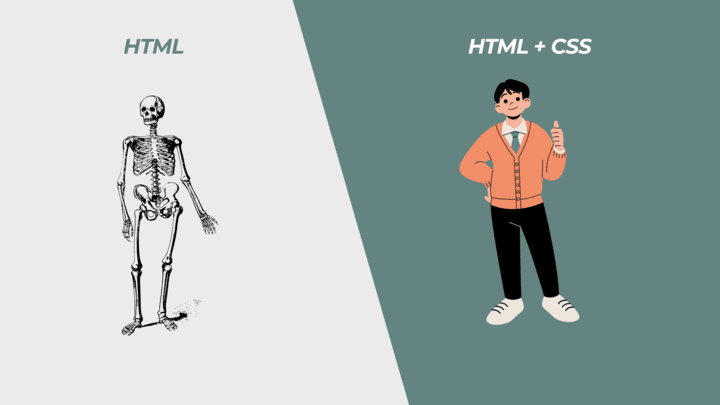n the world of web development, the acronyms HTML and CSS are frequently thrown around. They’re the backbone of every website, dictating how content is presented and styled. But does it really matter which one you use? In this article, we’ll explore the roles of HTML and CSS, their differences, and why both are essential for creating functional and visually appealing websites.
Understanding the Roles
HTML, or HyperText Markup Language, is the foundation of web pages. It’s responsible for structuring content on a webpage, defining headings, paragraphs, lists, images, and links. HTML provides the framework for the actual content you see on a website, arranging it into a meaningful order.
CSS, or Cascading Style Sheets, complements HTML by controlling the visual presentation of web content. It handles the colors, fonts, spacing, layout, and overall design of a webpage. CSS gives developers the power to transform a raw HTML structure into a polished and visually appealing website.
Differences and Complementary Nature
HTML and CSS serve different purposes, but they work hand in hand to create a cohesive web experience. Think of HTML as the skeleton of a webpage – it provides the structure and the essential elements. Without HTML, there would be no content to style. CSS, on the other hand, dresses up this skeleton, making it visually engaging and user-friendly.
Why HTML Matters
HTML forms the building blocks of a webpage, defining the structure and hierarchy of content. It includes various elements like headings, paragraphs, images, and links. When search engines crawl a webpage, they rely on HTML to understand the content and its context. HTML also plays a vital role in making websites accessible to users with disabilities. Using semantic HTML elements correctly can improve the site’s accessibility and search engine ranking.
Why CSS Matters
While HTML provides structure, CSS takes care of the presentation. CSS lets developers control fonts, colors, spacing, layout, and responsiveness. It ensures a consistent visual experience across different devices and screen sizes. A well-designed CSS can make a website more attractive, engaging, and user-friendly. Additionally, CSS offers the advantage of keeping the content separate from the design, which makes it easier to update and maintain.

The Synergy Between HTML and CSS
HTML and CSS are not mutually exclusive – they’re interconnected. A website relies on HTML to provide meaningful content, while CSS enhances this content’s appearance. Imagine a book: HTML is the text that conveys the information, while CSS is the book’s cover, font choice, and layout that make it visually appealing and easy to read.
Conclusion: It Matters That You Use Both
In the grand scheme of web development, HTML and CSS are both crucial ingredients. They’re like the yin and yang – separate entities that complement and balance each other. Without HTML, there’s no content to style. Without CSS, that content remains visually unappealing and lacks user engagement.
So, does it matter which one you use? Yes, it absolutely does. HTML and CSS are not in competition; they’re collaborators. They work together to create websites that are functional, accessible, and visually stunning. To truly excel in web development, it’s essential to understand and master both HTML and CSS, appreciating the unique roles they play in crafting the digital experiences we interact with daily.





